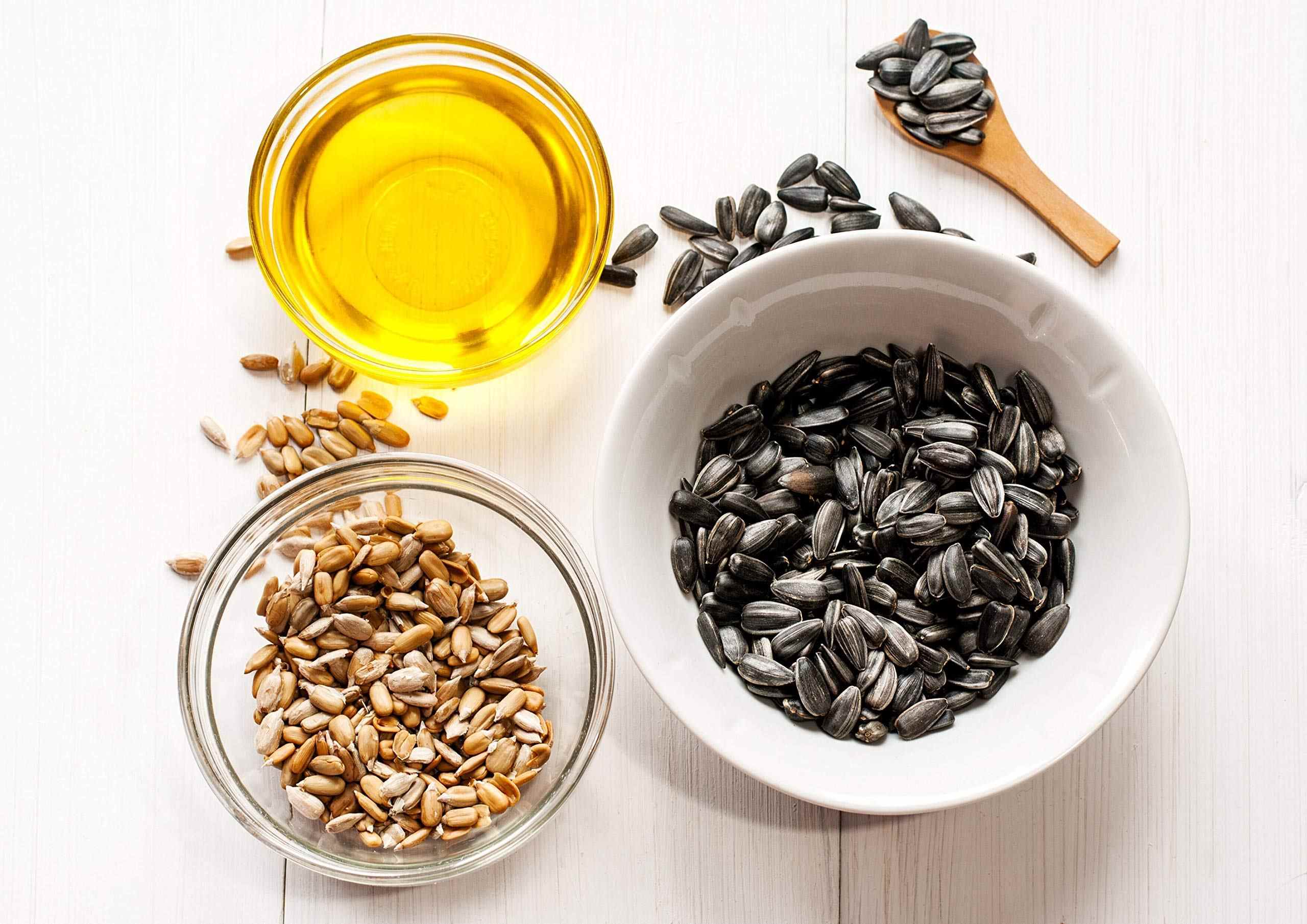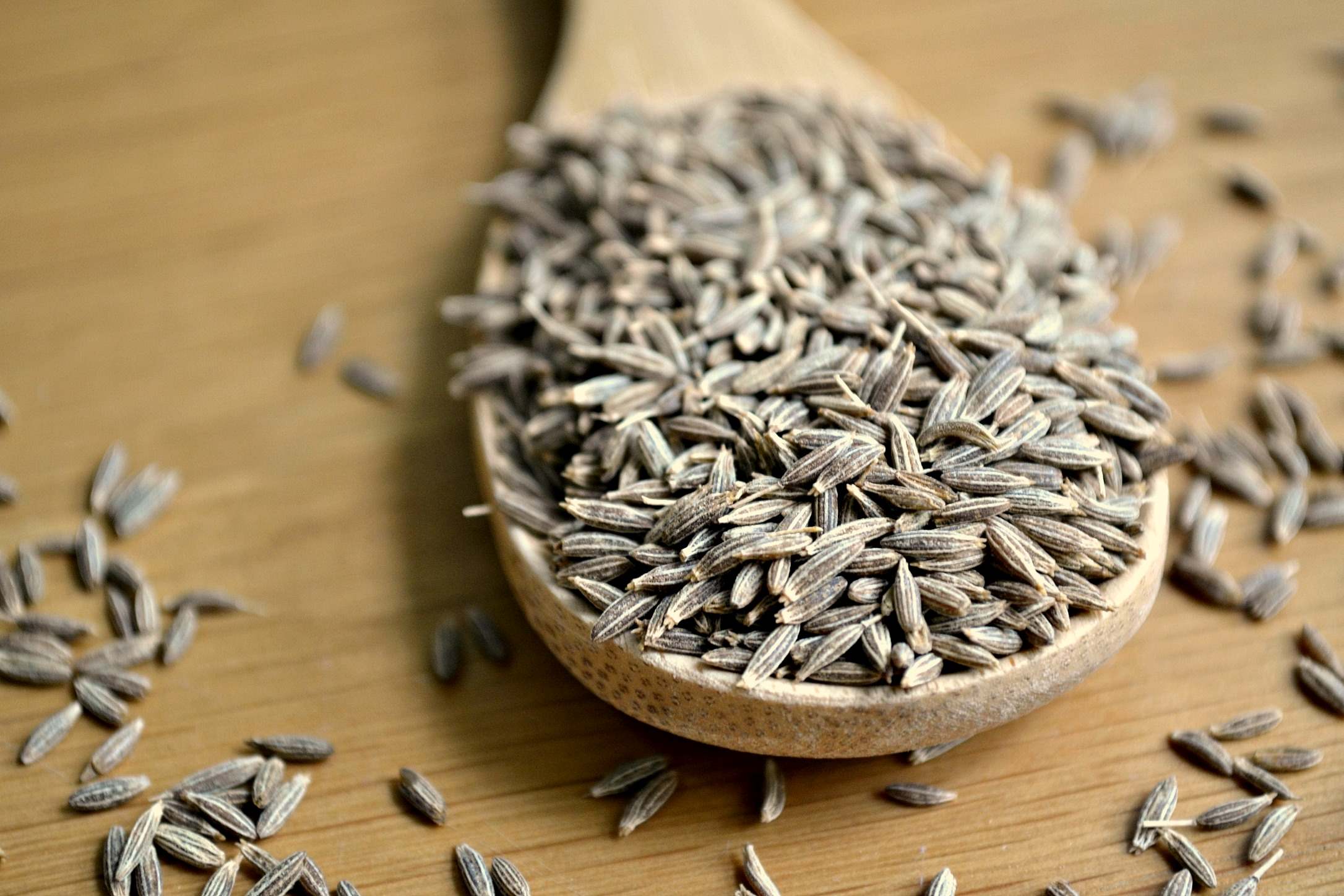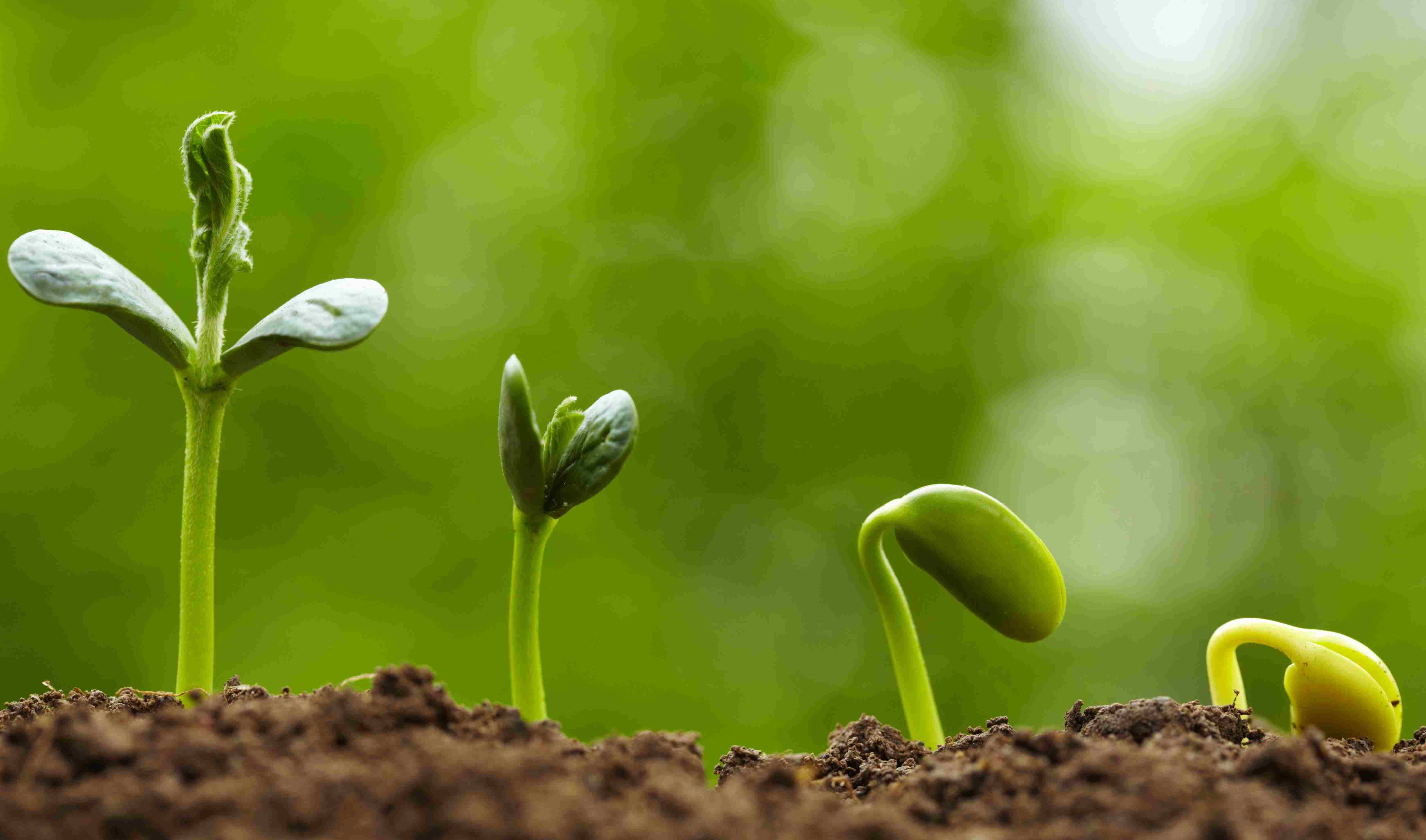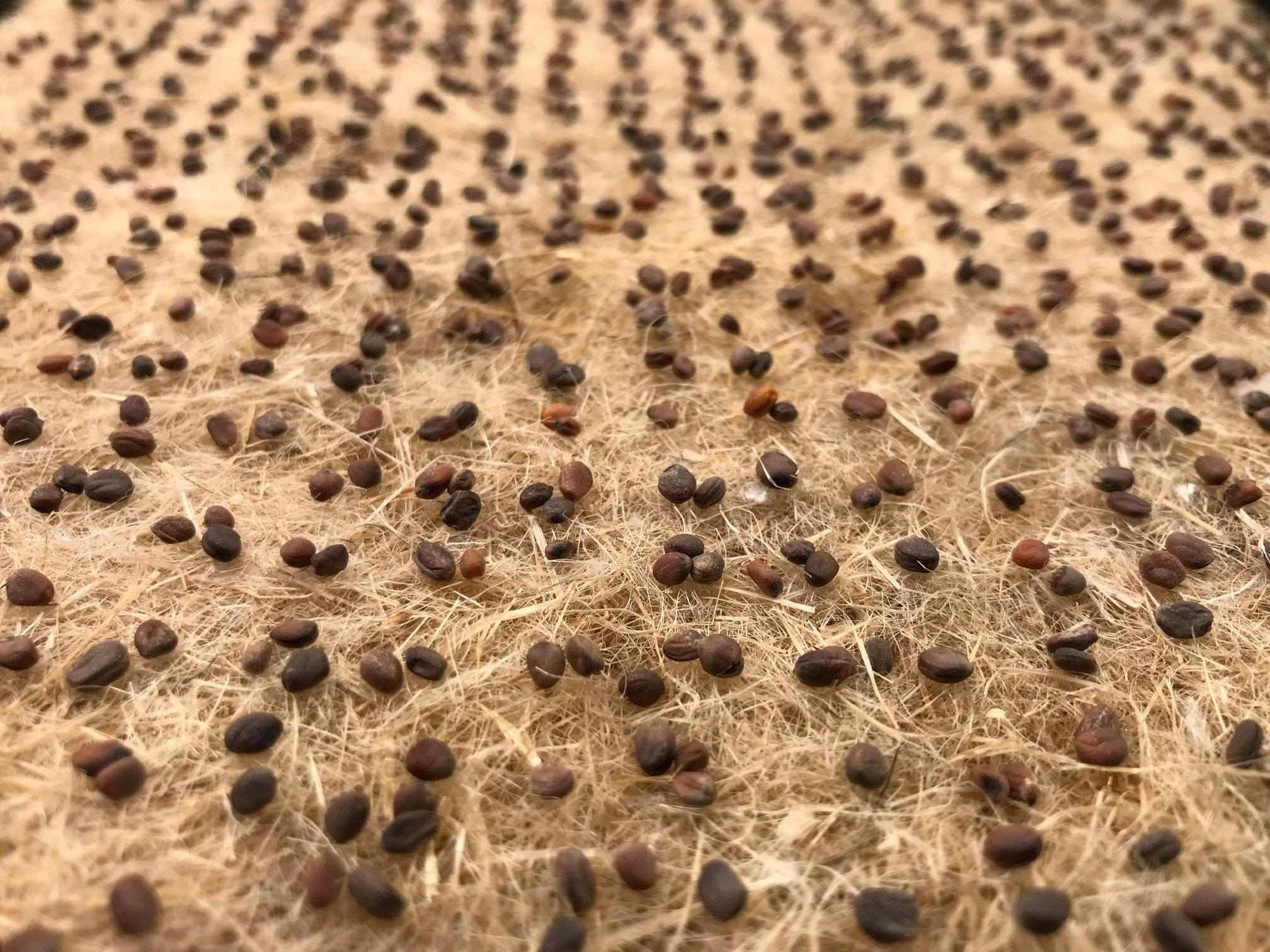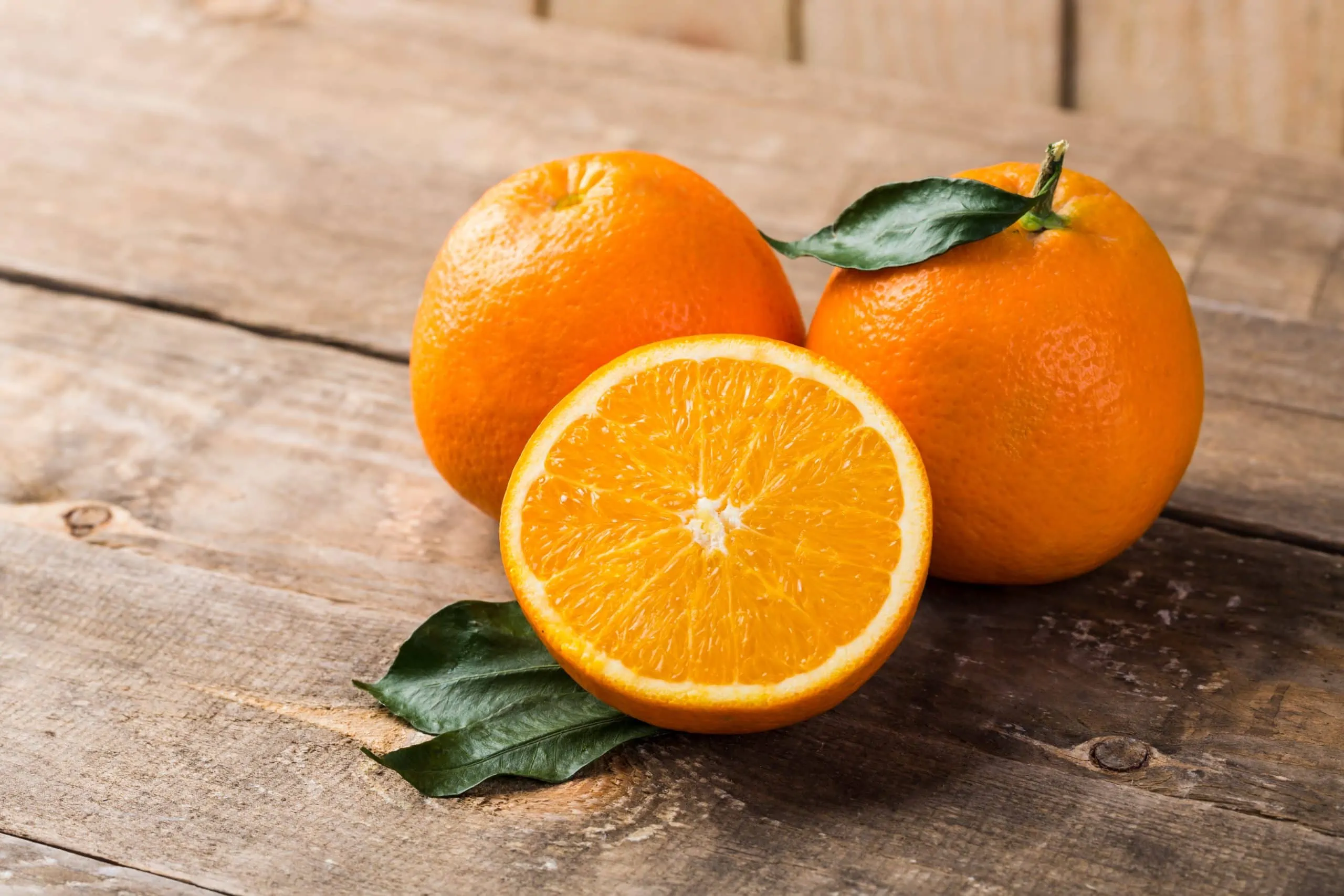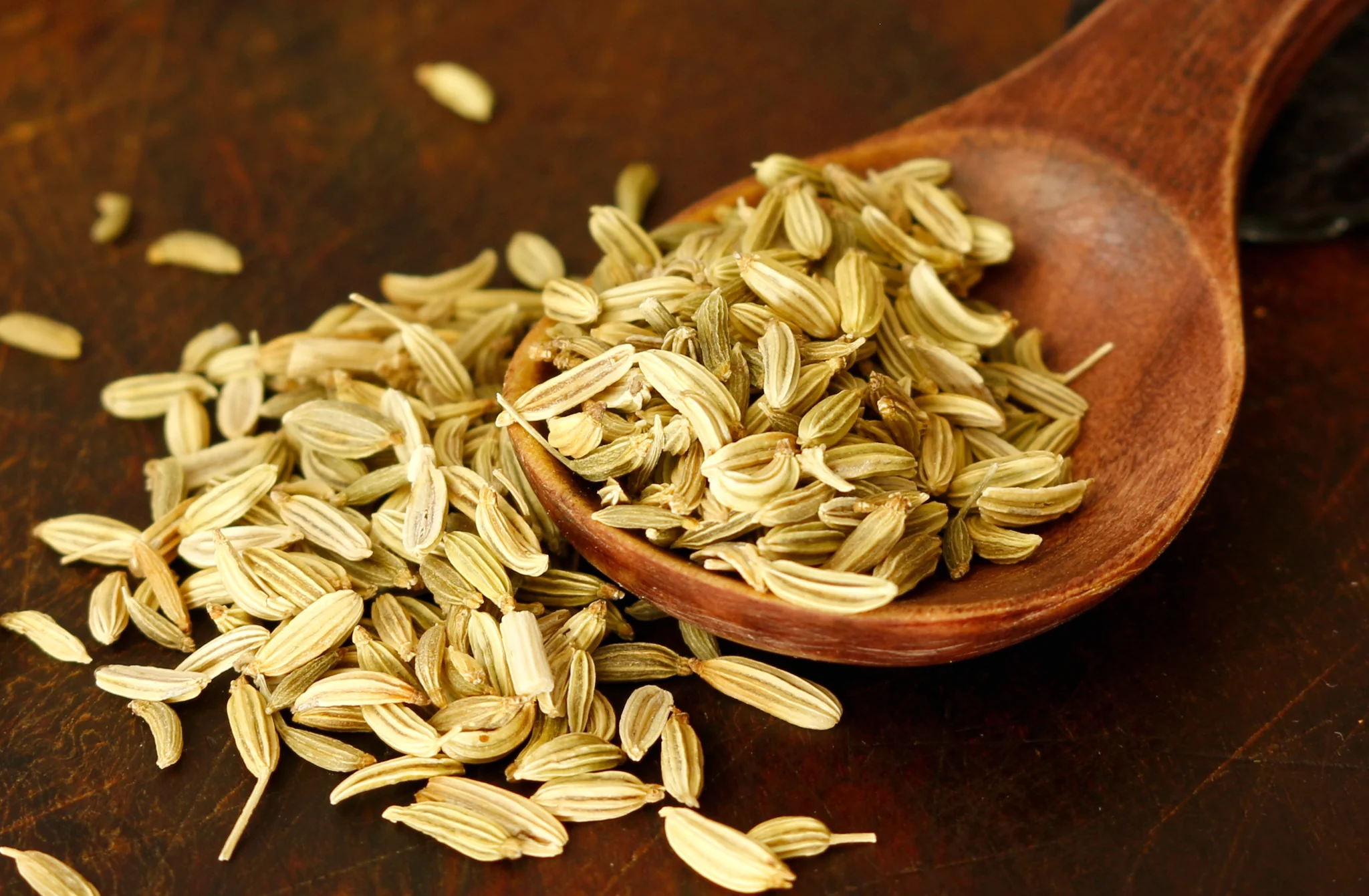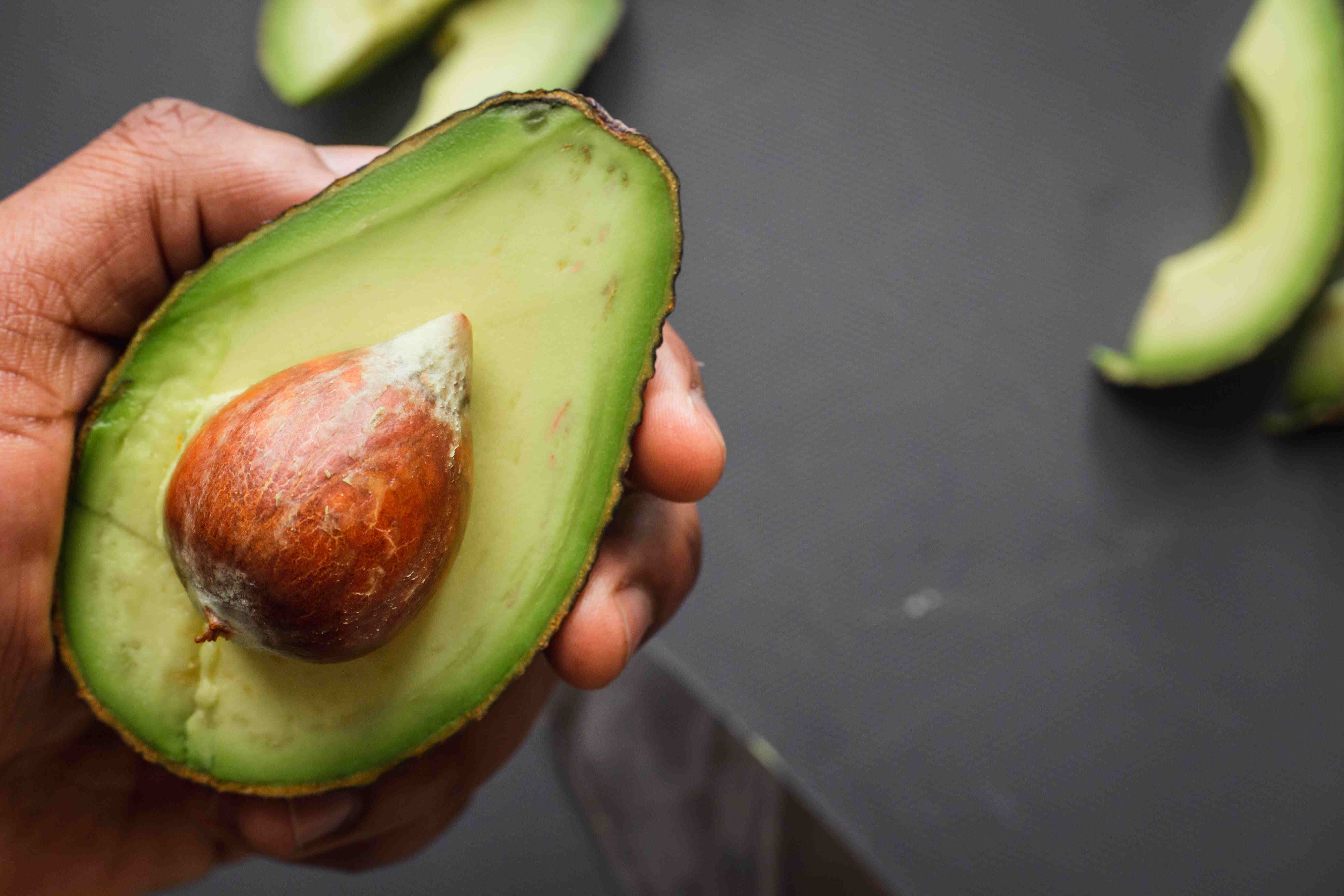Home>Gardening Basics>Getting Started>What Are Autoflowering Seeds


Getting Started
What Are Autoflowering Seeds
Published: September 18, 2023
Discover the benefits of autoflowering seeds and learn how to get started with your own garden. Get expert tips and advice on growing autoflowers.
(Many of the links in this article redirect to a specific reviewed product. Your purchase of these products through affiliate links helps to generate commission for Chicagolandgardening.com, at no extra cost. Learn more)
Table of Contents
- Introduction
- What are Autoflowering Seeds?
- Advantages of Autoflowering Seeds
- Disadvantages of Autoflowering Seeds
- How do Autoflowering Seeds Work?
- Popular Autoflowering Seed Varieties
- Growing Autoflowering Seeds
- Tips for Successful Autoflowering Seed Cultivation
- Harvesting and Storing Autoflowering Seeds
- Conclusion
Introduction
Welcome to the world of cannabis cultivation! If you have ever considered growing your own cannabis plants, you have likely come across the term “autoflowering seeds.” These unique seeds have gained popularity among both novice and experienced growers for their ease of cultivation and quick turnaround time. In this article, we will explore the fascinating world of autoflowering seeds, their advantages and disadvantages, how they work, popular varieties, and tips for successful cultivation.
Autoflowering seeds are a relatively newer development in the world of cannabis cultivation. Unlike traditional photoperiod seeds, which require specific light cycles to transition from the vegetative to the flowering stage, autoflowering seeds automatically switch to flowering regardless of the light cycle they are exposed to. This means that you can grow cannabis plants that flower and mature faster, making the cultivation process more efficient and convenient.
With their short life cycle and ability to thrive in a range of environmental conditions, autoflowering seeds have become a game-changer for many cannabis enthusiasts. Whether you are a beginner looking for a hassle-free growing experience or an experienced grower wanting to maximize your yields, autoflowering seeds offer an exciting opportunity to cultivate top-quality cannabis with minimal effort.
In the following sections, we will delve deeper into the world of autoflowering seeds. We will discuss the advantages and disadvantages of growing autoflowering plants, how they work, popular autoflowering seed varieties, tips for successful cultivation, and how to harvest and store your autoflowering seeds.
So, whether you are planning to embark on your first cannabis cultivation journey or interested in expanding your repertoire of growing techniques, keep reading to learn all about the wonders of autoflowering seeds. Get ready to unlock a world of possibilities and reap the rewards of your own homegrown cannabis!
What are Autoflowering Seeds?
Autoflowering seeds are a special type of cannabis seeds that have been genetically bred to automatically enter the flowering stage without relying on specific light cycle changes. This means that they do not require the traditional 12 hours of light and 12 hours of darkness to initiate flowering, unlike photoperiod seeds. Instead, autoflowering seeds will begin to flower after a certain period of time, typically around 2 to 4 weeks after germination.
The key characteristic of autoflowering seeds lies in their ability to flower based on age rather than light exposure. This trait is derived from the cannabis ruderalis plant, which originated in regions with harsh climates and short summers. Ruderalis plants evolved to automatically flower in order to reproduce before the cold winter months arrived.
Autoflowering seeds inherit this autoflowering trait from ruderalis genetics and combine it with the desired qualities of other cannabis strains, such as indica or sativa, resulting in a new generation of easy-to-grow, fast-flowering cannabis plants.
One of the main advantages of autoflowering seeds is their short life cycle. While photoperiod plants may take anywhere from 10 to 16 weeks to fully mature, autoflowering plants typically complete their life cycle in just 8 to 10 weeks. This rapid growth and flowering process make autoflowering seeds an attractive option for growers looking to obtain quick harvests or those with limited cultivation space.
Autoflowering seeds also offer the advantage of being more forgiving when it comes to environmental factors. These plants are known for their resilience and ability to withstand fluctuations in temperature, light cycles, and other stress factors. This makes them suitable for beginners or those growing in less than optimal conditions, such as balcony gardens or indoor setups with limited control over environmental variables.
Furthermore, autoflowering seeds are known for their compact size. While photoperiod plants can grow quite tall and may require extensive pruning and training techniques to manage their height, autoflowering plants tend to stay small and bushy. This makes them an excellent choice for growers with limited vertical space or those looking for more discreet cultivation options.
Now that we understand what autoflowering seeds are and some of their advantages, let’s move on to exploring their benefits and drawbacks in more detail.
Advantages of Autoflowering Seeds
Autoflowering seeds offer numerous advantages that have made them increasingly popular among cannabis growers. Whether you are a beginner looking for a convenient and rewarding cultivation experience or an experienced grower seeking to optimize your yields, autoflowering seeds have plenty to offer. Here are some key advantages to consider:
- Rapid growth and flowering: One of the most prominent advantages of autoflowering seeds is their fast life cycle. From germination to harvest, these plants typically take only 8 to 10 weeks. This means you can enjoy multiple harvests in a single growing season compared to photoperiod plants, which may take much longer to mature. Autoflowering seeds are ideal for growers who want to save time or those in regions with short summers.
- Easy cultivation: Autoflowering seeds are known for their beginner-friendly nature. They require minimal intervention and are more forgiving when it comes to environmental factors such as light cycles, temperature fluctuations, and nutrient levels. Their resilience makes them a great choice for novice growers who are still learning the ropes of cannabis cultivation.
- Compact size: Autoflowering plants tend to stay small and bushy, making them perfect for growers with limited space. Whether you are growing indoors or have a small outdoor garden, autoflowering seeds allow you to maximize your cultivation area without worrying about plants growing too tall. This compact size also adds to the discreetness of growing, as it is easier to hide or camouflage smaller plants.
- Flexibility: Autoflowering seeds offer flexibility in terms of when and where they can be grown. Since they are not reliant on specific light cycles, you have greater freedom in choosing the best time to start your cultivation. This can be particularly valuable if you live in a region with unpredictable weather patterns or want to stagger your harvests throughout the year.
- Reduced energy costs: Unlike photoperiod plants that require specific light cycles and potentially expensive lighting setups, autoflowering seeds can thrive with a simpler lighting system. They can be grown using less powerful and energy-efficient lights, saving you money on electricity bills. This makes them an eco-friendly choice and more budget-friendly for growers.
These advantages make autoflowering seeds an enticing option for growers of all levels of experience. Whether you are a novice looking for an easy start or an experienced cultivator aiming for speedy and efficient harvests, autoflowering seeds provide a range of benefits that can enhance your cannabis cultivation experience. It’s time to explore the world of autoflowering seed varieties and uncover the possibilities they hold!
Disadvantages of Autoflowering Seeds
While autoflowering seeds have many advantages, it’s important to consider the potential drawbacks as well. Understanding the challenges associated with growing autoflowering plants will help you make an informed decision and optimize your cultivation experience. Here are some key disadvantages to be aware of:
- Lower yields: Autoflowering seeds generally produce smaller yields compared to photoperiod plants. This is because the short life cycle limits the amount of time the plants have to grow and develop. If your primary goal is to maximize your harvest, photoperiod plants may be a better choice, as they have a longer vegetative phase that allows for more substantial growth.
- Limited control over plant size: While the compact size of autoflowering plants can be an advantage in terms of space efficiency, it can also be a limitation in certain situations. If you have ample vertical space and want to cultivate larger plants, autoflowering seeds may not meet your expectations. These plants tend to stay small and may not respond well to extensive pruning or training techniques aimed at increasing plant size.
- Less time for recovery: Autoflowering plants have a limited window for recovery from stress or mistakes during cultivation. Since they flower automatically based on age rather than light cycles, any setbacks or issues encountered during the growth phase can significantly impact the final yield. It’s crucial to provide optimal conditions and care from the start to minimize stress and ensure the best outcome.
- Reduced potency: Some autoflowering strains may have lower cannabinoid levels compared to their photoperiod counterparts. While this is not the case for all autoflowering varieties, it’s worth noting that potency can vary. If high THC or CBD content is a priority for you, research and select autoflowering strains known for their potent cannabinoid profiles.
- Limited time for experimentation: Autoflowering plants have a predefined life cycle, which means there is less time for experimentation, such as different training techniques or extended vegetative growth periods. If you enjoy exploring different cultivation methods or want to experiment with various techniques, photoperiod plants may provide a more flexible canvas for your creative endeavors.
Despite these disadvantages, many growers find that the benefits of autoflowering seeds outweigh the challenges. The key is to understand your specific goals, constraints, and preferences as a cultivator. By considering both the advantages and disadvantages, you can make an informed decision and tailor your approach to successfully grow autoflowering plants.
How do Autoflowering Seeds Work?
Autoflowering seeds have unique genetic characteristics that allow them to flower automatically, independent of specific light cycles. To understand how they work, let’s delve into the science behind autoflowering genetics.
The autoflowering trait is derived from the cannabis ruderalis plant, which developed in regions with short summers and harsh climates. Ruderalis plants adapted to their environment by evolving the ability to automatically transition from the vegetative growth stage to the flowering stage based on age rather than light exposure. This autosomal genetic trait has been harnessed by breeders to create autoflowering seeds.
Autoflowering seeds are created by crossing cannabis ruderalis with other cannabis strains, such as indica or sativa, to combine desired characteristics and create new hybrid varieties. The resulting seeds inherit the autosomal gene responsible for autoflowering, allowing them to initiate flowering without being dependent on specific light variations.
Typically, autoflowering seeds will enter the flowering stage after a specific period of time, ranging from 2 to 4 weeks after germination. This timeframe can vary depending on the specific strain and environmental conditions. Once the plants reach a certain age, regardless of the light cycle they are exposed to, hormonal changes occur within the plant, triggering the flowering process.
The automatic flowering process of these seeds is advantageous for growers because it eliminates the need to closely monitor light cycles and make adjustments accordingly. Instead, cultivators can provide a consistent light schedule throughout the entire growth cycle, typically 18-24 hours of light per day, without the need for a specific dark period. This simplifies the cultivation process and makes it more accessible for beginners.
It’s important to note that although autoflowering plants transition into the flowering stage automatically, they still require an adequate amount of light to grow and produce optimal yields. Providing sufficient light intensity and the right spectrum is essential for healthy development and successful cultivation of autoflowering plants.
Overall, the unique genetic makeup of autoflowering seeds allows them to bypass the need for specific light cycles and transition smoothly from the vegetative to the flowering stage based on age. By understanding this mechanism, growers can effectively cultivate autoflowering plants and enjoy the benefits of their convenient and efficient cultivation process.
Popular Autoflowering Seed Varieties
Autoflowering seeds have gained immense popularity, leading to a wide range of strains available to cater to different preferences and growing conditions. These popular autoflowering varieties offer a diverse array of flavors, effects, and growing characteristics. Let’s explore some of the most sought-after autoflowering seed varieties:
- Auto Northern Lights: Renowned for its relaxing and euphoric effects, Auto Northern Lights is a classic strain that remains popular among growers. It typically has a short flowering time and offers dense buds with a sweet and spicy aroma.
- Auto Blueberry: Known for its exceptional flavor profile and therapeutic benefits, Auto Blueberry has a distinct fruity aroma and provides a well-balanced high. This strain is favored for its beautiful purple hues and its ability to grow in diverse climates.
- Auto Amnesia Haze: A favorite among sativa lovers, Auto Amnesia Haze offers a potent and invigorating cerebral high. It has a long-lasting effect and boasts a citrusy and earthy flavor profile. This strain requires more attention and care but rewards growers with exceptional yields.
- Auto White Widow: A classic strain that has been around for decades, Auto White Widow is loved for its strong potency and uplifting effects. It produces resinous buds with a balanced blend of earthy and floral flavors. This strain is known for its adaptability and ability to thrive in various environments.
- Auto Gorilla Glue: Recognized for its extreme resin production and powerful effects, Auto Gorilla Glue is a top choice for those seeking a heavy-hitting strain. It offers a pungent and earthy aroma with notes of chocolate. This strain typically develops large and sticky buds, making it a favorite among hash and concentrate enthusiasts.
- Auto AK-47: A legendary strain known for its potency and uplifting effects, Auto AK-47 is cherished by both recreational and medicinal users. It has a complex flavor profile, combining earthy and sweet notes. This strain exhibits vigorous growth and demonstrates excellent resilience.
These popular autoflowering seed varieties represent just a fraction of the extensive selection available in the market. Whether you prefer indica, sativa, or hybrid strains, there are autoflowering options to suit your taste and growing environment.
When choosing autoflowering seeds, consider factors such as desired effects, flavor profile, growing difficulty, yield potential, and environmental conditions. Researching and selecting reputable seed banks or breeders will ensure that you obtain high-quality genetics and increase the chances of successful cultivation.
Now that you have discovered some popular autoflowering seed varieties, it’s time to select the ones that resonate with your preferences, embark on your growing journey, and experience the delights of cultivating your own top-quality cannabis!
Growing Autoflowering Seeds
Growing autoflowering seeds is an exciting venture that offers simplicity and convenience. Whether you are a beginner or an experienced grower, cultivating autoflowering plants can be a rewarding and enjoyable experience. Let’s delve into the essential aspects of growing autoflowering seeds:
1. Germination: Start by germinating your autoflowering seeds. You can use various methods such as placing them between moist paper towels or using starter cubes or peat pellets. Keep them in a warm and humid environment until they sprout and develop a root.
2. Pot and medium selection: Transplant your germinated seeds into suitable pots or containers filled with well-draining and nutrient-rich soil or a quality hydroponic medium. Ensure that the pots have sufficient drainage holes to prevent waterlogging.
3. Lighting: Provide your autoflowering plants with ample light throughout the entire growth cycle. While they can thrive under different lighting setups, consider using high-quality LED grow lights or compact fluorescent grow lights. Aim for 18-24 hours of light per day during the vegetative and flowering stages.
4. Nutrients and watering: Autoflowering plants have a relatively short life cycle, which means they have limited time to recover from nutrient deficiencies or excesses. Start with mild nutrient solutions and monitor your plants closely for signs of nutrient imbalances. Water your plants when the top inch of the soil feels dry to the touch, avoiding overwatering.
5. Temperature and humidity: Maintain a temperature range of 20-28°C (68-82°F) during the day and slightly cooler temperatures at night. Autoflowering plants can tolerate higher temperatures but avoid extremes. Aim for a relative humidity level of around 40-60% during the vegetative stage, gradually decreasing to 40-50% during flowering.
6. Training and pruning: While autoflowering plants have limited time for training and recovery, some light low-stress training (LST) techniques can be applied during the early vegetative stage. This can help maximize light exposure and increase bud development. However, avoid aggressive pruning or techniques that may cause stress and hinder growth.
7. Harvesting: Autoflowering plants have a predefined life cycle, usually between 8 to 10 weeks. Pay attention to the trichome development and the pistils (hairs) on the buds to determine the optimal harvest time. Trichomes can change from clear to cloudy or amber, indicating the desired levels of cannabinoids and terpenes.
8. Drying and curing: After harvesting, dry your buds in a dark, well-ventilated area with low humidity. Aim for a slower drying process to preserve the flavors and potency of the buds. Once dried, properly cure the buds in sealable jars, burping them regularly to remove excess moisture and enhance flavor and aroma.
Growing autoflowering seeds offers a streamlined approach, but it requires attention to detail and proper care. Each strain may have specific requirements, so it’s crucial to research and understand the needs of the particular variety you are cultivating.
By providing optimal conditions, selecting suitable nutrients, and closely monitoring your plants, you can experience the joy of watching your autoflowering seeds transform into beautiful, resinous buds that are ready for harvest.
Tips for Successful Autoflowering Seed Cultivation
Cultivating autoflowering seeds can be a rewarding experience, and with some essential tips, you can optimize your success and enjoy a bountiful harvest. Here are some key tips to keep in mind for successful autoflowering seed cultivation:
- Choose quality genetics: Start with high-quality autoflowering seeds from reputable breeders. Good genetics play a crucial role in the overall success of your harvest. Look for strains that are known for their stability, potency, and characteristics that align with your preferences.
- Provide ample light: Autoflowering plants thrive with 18-24 hours of light per day throughout their entire life cycle. Invest in high-quality LED grow lights or other suitable lighting systems to ensure your plants receive the optimal light intensity and spectrum for healthy growth.
- Avoid transplanting: Autoflowering plants have a short life cycle and can be sensitive to transplanting stress. It is generally best to directly sow your seeds into their final containers to minimize disruption to the root system.
- Use light, airy soil: Choose a well-draining soil or growing medium to prevent overwatering and promote healthy root development. Light and airy soil will help oxygenate the roots and prevent issues such as root rot.
- Manage nutrient levels: Autoflowering plants have specific nutrient requirements, so it’s important to use a balanced nutrient formula designed for cannabis cultivation. Start with mild nutrient solutions and gradually increase as the plants grow. Monitor your plants closely for any signs of nutrient deficiencies or excesses and adjust accordingly.
- Watch humidity levels: While autoflowering plants can tolerate higher humidity levels, it’s important to maintain good airflow and avoid excess moisture, which can lead to mold and other issues. Use proper ventilation and dehumidifiers if necessary, particularly during the flowering stage when the buds are more susceptible to moisture-related problems.
- Observe watering practices: Avoid overwatering your autoflowering plants, as they can be sensitive to excessive moisture. Water them when the top inch of the soil feels dry to the touch, and ensure proper drainage to prevent waterlogged roots.
- Monitor pests and diseases: Regularly inspect your plants for pests such as aphids, spider mites, or fungi. Promptly address any infestations or signs of disease to prevent the spread and ensure the health of your plants. Consider using organic pest control methods to minimize the use of harsh chemicals.
- Timing is everything: Autoflowering plants have a predetermined life cycle, so timing is crucial for a successful harvest. Plan your cultivation based on the estimated time from germination to harvest to ensure you can provide the necessary care and attention during each stage.
- Keep records: Maintaining a cultivation journal can be invaluable in tracking your progress, identifying patterns, and learning from each growing cycle. Take note of the specific strains, techniques, environmental conditions, and outcomes to continuously improve your future cultivation endeavors.
By following these tips, you can enhance your chances of success and enjoy a successful and rewarding autoflowering seed cultivation experience. Remember, each strain may have unique requirements, so always research and understand the specific needs of the varieties you choose. Happy growing!
Harvesting and Storing Autoflowering Seeds
Harvesting and storing autoflowering seeds is a crucial step in the cultivation process to ensure the preservation of the genetics and future successful grows. Here are some important considerations when it comes to harvesting and storing your autoflowering seeds:
Timing the harvest: Autoflowering plants have a predetermined life cycle, typically ranging from 8 to 10 weeks. The optimal time to harvest is when the trichomes on the buds transition from clear to milky or amber. Use a magnifying glass or jeweler’s loupe to observe the trichomes’ color and make the decision based on the desired level of cannabinoids and effects.
Cutting and drying: Use clean and sterilized garden shears or scissors to carefully cut the main stems of the plants. Trim away any large fan leaves but leave smaller sugar leaves intact, as they contain valuable resin. Hang the trimmed plants upside down in a dark, well-ventilated area with moderate humidity to dry. Aim for a slow drying process of around 7-10 days, which allows the buds to fully develop their flavors and potency.
Curing the buds: After the initial drying, it is crucial to cure your buds. Place the dried buds in sealable glass jars, filling them about 75% full to allow air circulation. Store the jars in a cool, dark place with a consistent temperature of around 18-21°C (64-70°F). Open the jars for a few minutes daily to release excess moisture, also known as burping. This process helps optimize the flavors, aromas, and overall quality of the buds. Curing typically takes a few weeks to several months, depending on personal preference and desired effects.
Storing the seeds: After harvesting and drying the buds, it’s time to collect and store the autoflowering seeds for future use. Carefully separate the seeds from the dried buds to prevent any moisture or mold transfer. Place the seeds in a clean and dry container, such as a glass jar or airtight bag. Store the seeds in a cool, dark, and dry location to preserve their viability. It is advisable to include a desiccant packet to absorb any humidity and keep the seeds in optimal condition.
Labeling and organization: Properly labeling your stored autoflowering seeds is essential for easy identification and organization. Make sure to label the containers with the strain name, date of harvest, and any other relevant information. This will help you keep track of your seed collection and ensure you can select the desired strains for future grows.
Long-term storage: If you plan to store your autoflowering seeds for an extended period, consider using a refrigerator or freezer for long-term preservation. Place the labeled seed containers in airtight bags or containers with silica gel packets to minimize moisture. It’s important to note that when removing seeds from cold storage, allow them to come to room temperature before opening the container to avoid condensation.
By following these guidelines, you can effectively harvest, dry, cure, and store your autoflowering seeds, ensuring their viability and quality for future cultivation endeavors. Properly stored seeds can retain their genetic integrity for years, allowing you to enjoy successful, consistent grows and explore a variety of autoflowering strains.
Conclusion
Autoflowering seeds have revolutionized the world of cannabis cultivation, offering convenience and efficiency to both novice and experienced growers. These unique seeds, derived from the cannabis ruderalis plant, flower automatically without relying on specific light cycles. As we have explored in this article, growing autoflowering seeds comes with several advantages, including rapid growth, easy cultivation, and the ability to thrive in various environments.
While there are some disadvantages, such as smaller yields and limited control over plant size, the overall benefits of autoflowering seeds make them an appealing choice for many growers. With the right techniques and attention to detail, successful cultivation of autoflowering plants is within reach.
To maximize your success, it is important to select high-quality genetics, provide ample lighting, use well-draining soil, and monitor nutrient and moisture levels. Attention to factors such as temperature, humidity, and potential pest and disease issues is also crucial for healthy plant development. Timing the harvest, properly drying, curing, and storing your autoflowering seeds will ensure their potency and viability for future use.
Remember, each autoflowering strain may have specific requirements and characteristics, so it’s essential to research and understand the needs of the strains you choose to cultivate. Keeping records of your cultivation journey can provide valuable insights and improve your future growing endeavors.
By embracing the world of autoflowering seeds, you can embark on a rewarding journey of growing your own top-quality cannabis. Whether you are seeking a quick and easy cultivation process or want to experiment with different strains and techniques, autoflowering seeds offer a wealth of possibilities. So, roll up your sleeves, plant some autoflowering seeds, and enjoy the joy and satisfaction of nurturing your own homegrown cannabis!
